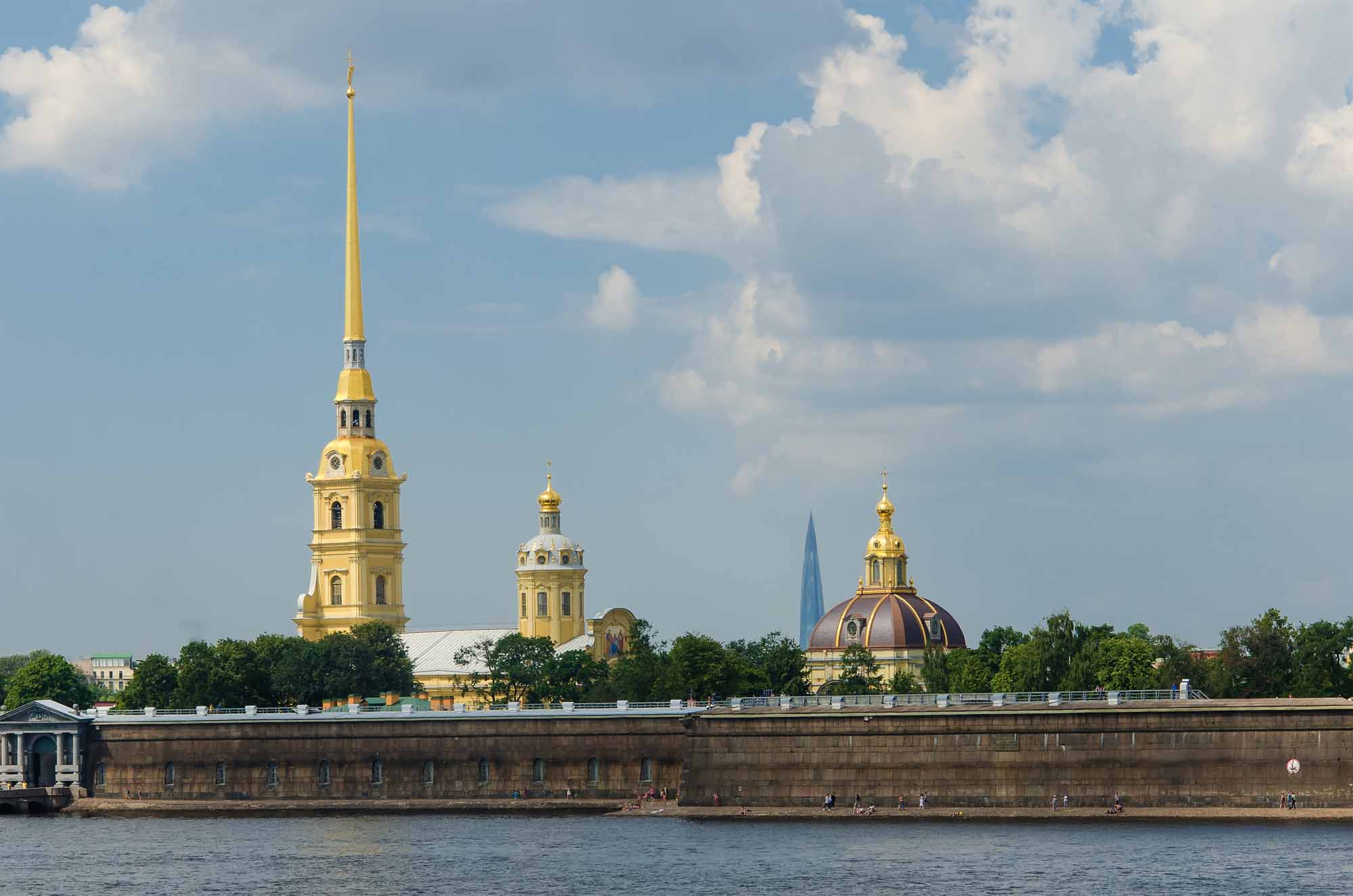
The Peter and Paul Fortress was founded by Peter the Great in 1703 on Zayachy Island and rebuilt in stone from 1706 to 1740. The purpose of the fortress was to protect the projected new capital from feared Swedish attacks, but it never fulfilled its martial purpose. In tsarist times the fortress served as a base for the city garrison and as a prison for high-ranking or political prisoners. Some years after the October revolution, the fort was converted to a museum. Nowadays the fortress is a part of the State Museum of the History of St. Petersburg. On the territory of the fortress there is the Peter and Paul Cathedral (1712–1733) that serves as the burial place of all Russian tsars from Peter I to Alexander III ( except of Peter II and Ivan VI). Other notable buildings of the fortress are the functioning Saint Petersburg Mint, the Trubetskoy Bastion prison cells, and the city museum.
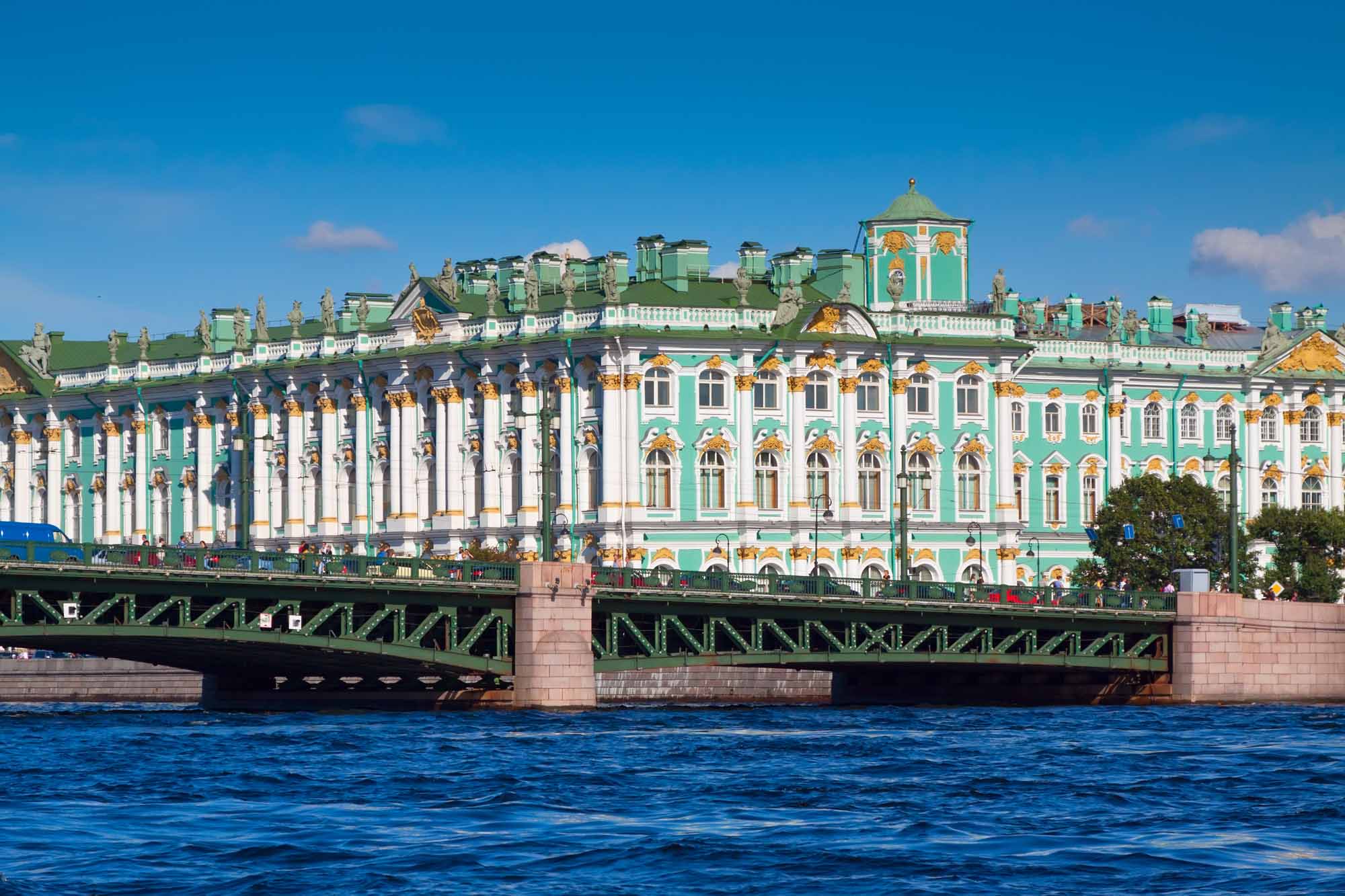
The State Hermitage Museum is the second-largest art museum in the world after the Louvre. Its collections count over three million items, including the largest collection of paintings in the world. The collections occupy six historic buildings, including the Winter Palace, a former residence of Russian emperors. The Hermitage museum was founded by Empress Catherine the Great in 1764, once she started acquiring works of art. However the museum opened to the public in 1852. In addition to French Neoclassical and Impressionist art, Flemish Baroque and Italian Renaissance exhibits, the museum also holds an impressive collection of Russian art from the 11th to 19th centuries, an Egyptian antiquity collection and a hall showcasing prehistoric art.
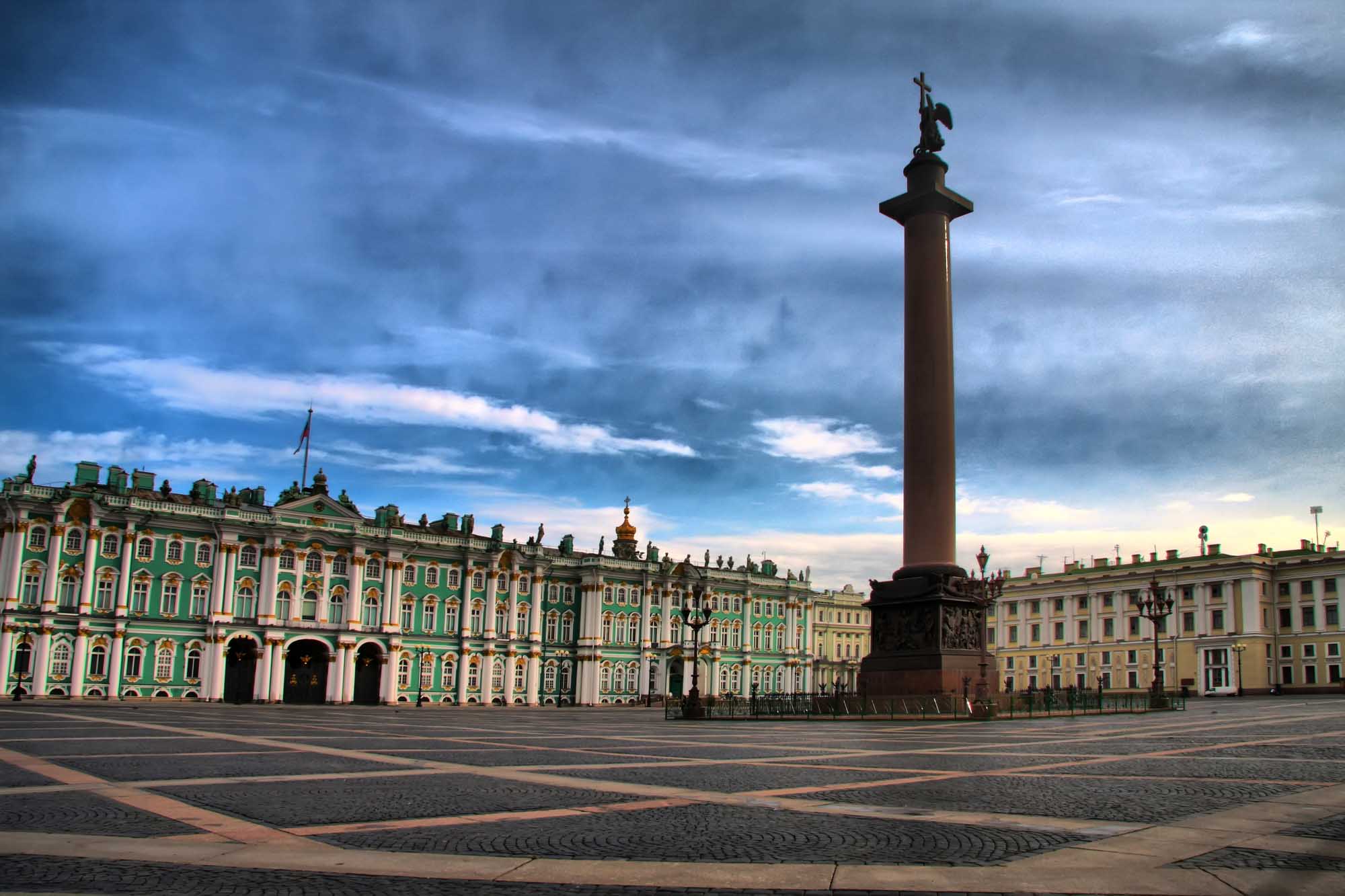
Palace Square is the central city square of St Petersburg. The most significant building situated on the square is the Baroque Winter Palace (1764), a former residence of Russian emperors. Opposite the Winter Palace there is the bow-shaped Empire-style Building of the General Staff (1819–1829). On the eastern side of the square there is the building of the Guards Corps Headquarters (1837–1843). In the middle of the square there is the 47 meters high Alexander Column, built in 1830-1834 of a single piece of 500 tons red granite to commemorate the victory over Napoleon. Many major events in Russian history have taken place on the square: Tsar Alexander II was shot here in 1879, the Bolsheviks started the Revolution here in 1917 by storming the Winter Palace. Nowadays the square is used for marches, demonstrations, festivals and celebrations (such as Victory Day and New Year’s Eve celebrations).
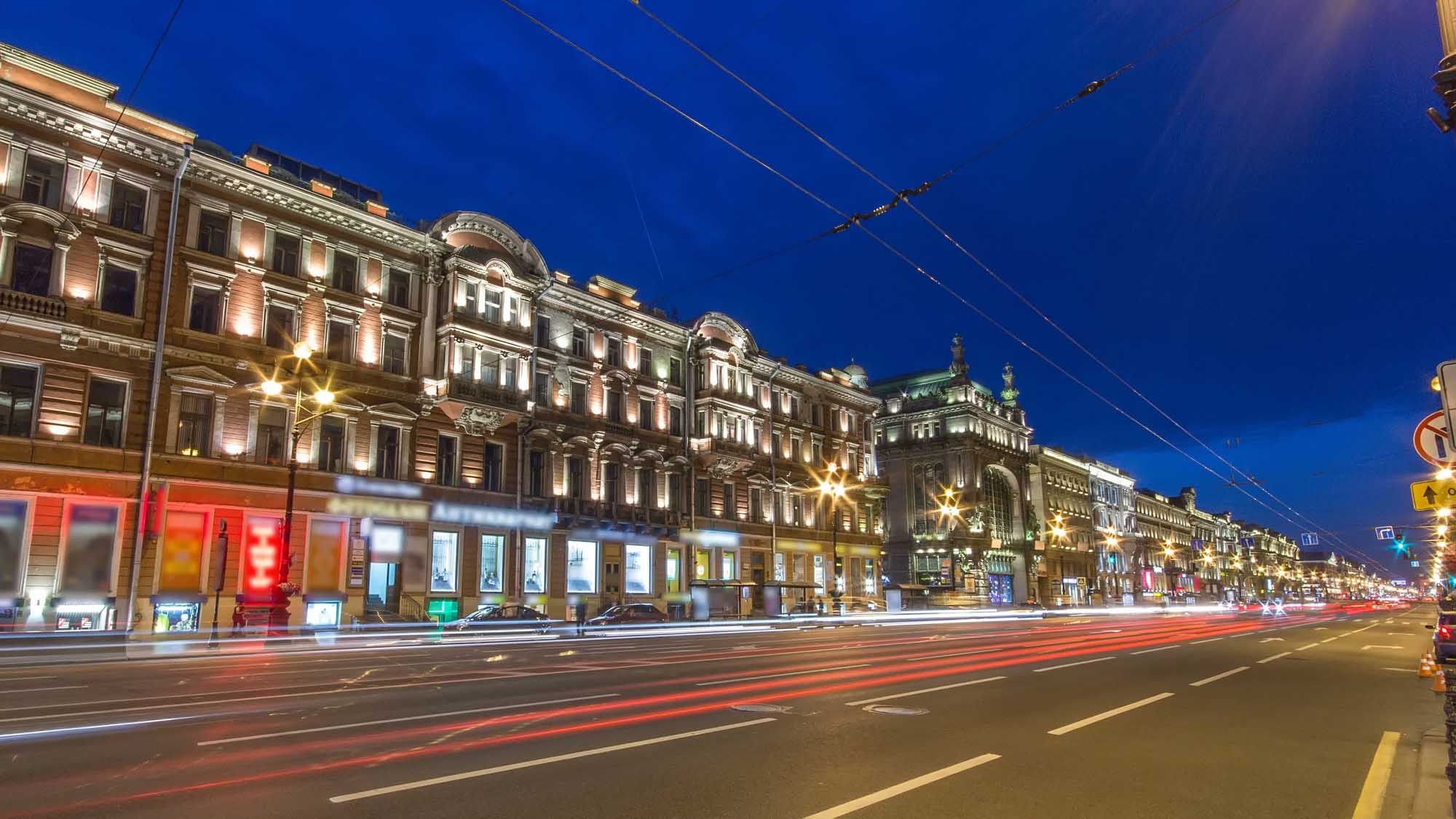
Nevsky Prospect is the main street of St. Petersburg. It was named after the Alexander Nevsky monastery which commemorates the Russian hero Prince Saint Alexander Nevsky (1221-1263). From the Alexander Nevsky monastery the avenue runs to Vosstaniya Square where the Moscow Railway Station is situated and further to the Admiralty. Along the Nevsky Prospect there are many magnificent historical buildings are situated, e.g. the Stroganov Palace, the neoclassical Kazan Cathedral, the Art Nouveau Bookhouse, the Elisseeff Emporium, several old churches, monument to Catherine the Great, the Russian National Library, the Anichkov Bridge with its horse statues. The majority of the city’s shopping and nightlife takes place in Nevsky Prospekt. The street hosts the Gostiny Dvor (one of the oldest shopping arcades in the world), lots of high-end shops, fancy restaurants, and luxury hotels.
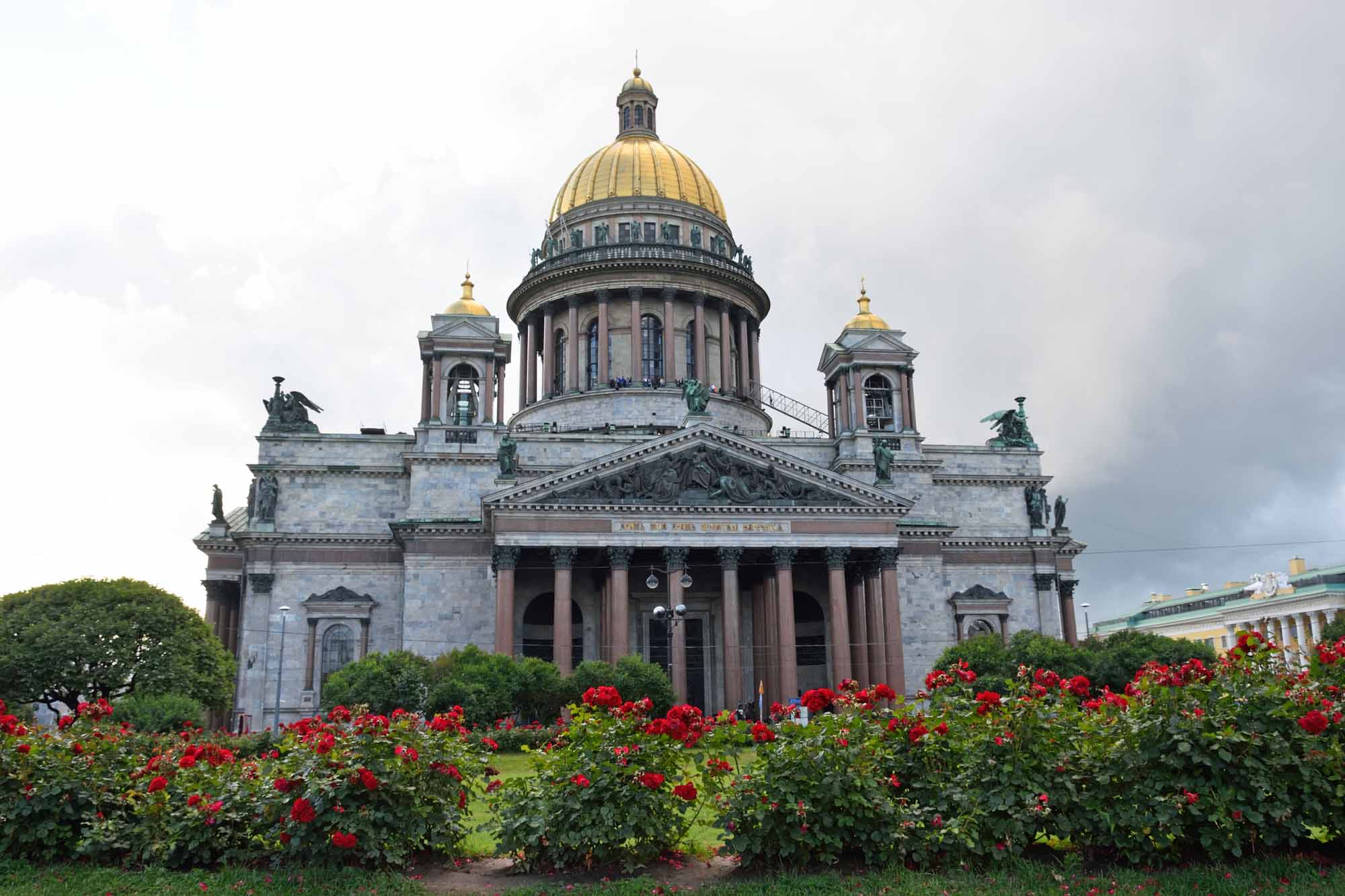
The St Isaac Cathedral is the world’s largest Orthodox basilica. The cathedral was named after St Isaac of Dalmatia, a patron saint of Peter the Great. The construction of the Neoclassical cathedral took 40 years. It was finished in 1858. To secure the construction, the cathedral’s foundation was strengthened by 25,000 piles. The exterior of the cathedral is faced with gray and pink stone, and features 112 red granite columns with Corinthian capitals. The exterior is also decorated with statues. The cathedral’s main dome is 101.5 metres high. The interior of the cathedral features many ancient icon paintings, mosaic images, bronze doors, colored stonework and marble. In 1931 the St Isaac’s Cathedral was turned into the Museum of the History of Religion and Atheism. Inside a large Foucault pendulum was set to visualize Copernicus’s theory. The cathedral is still a museum, religious service is rarely held here. When visiting St. Isaac’s Cathedral you can get to the 43-meter-high colonnade and enjoy a splendid view over the historic city center of St Petersburg.
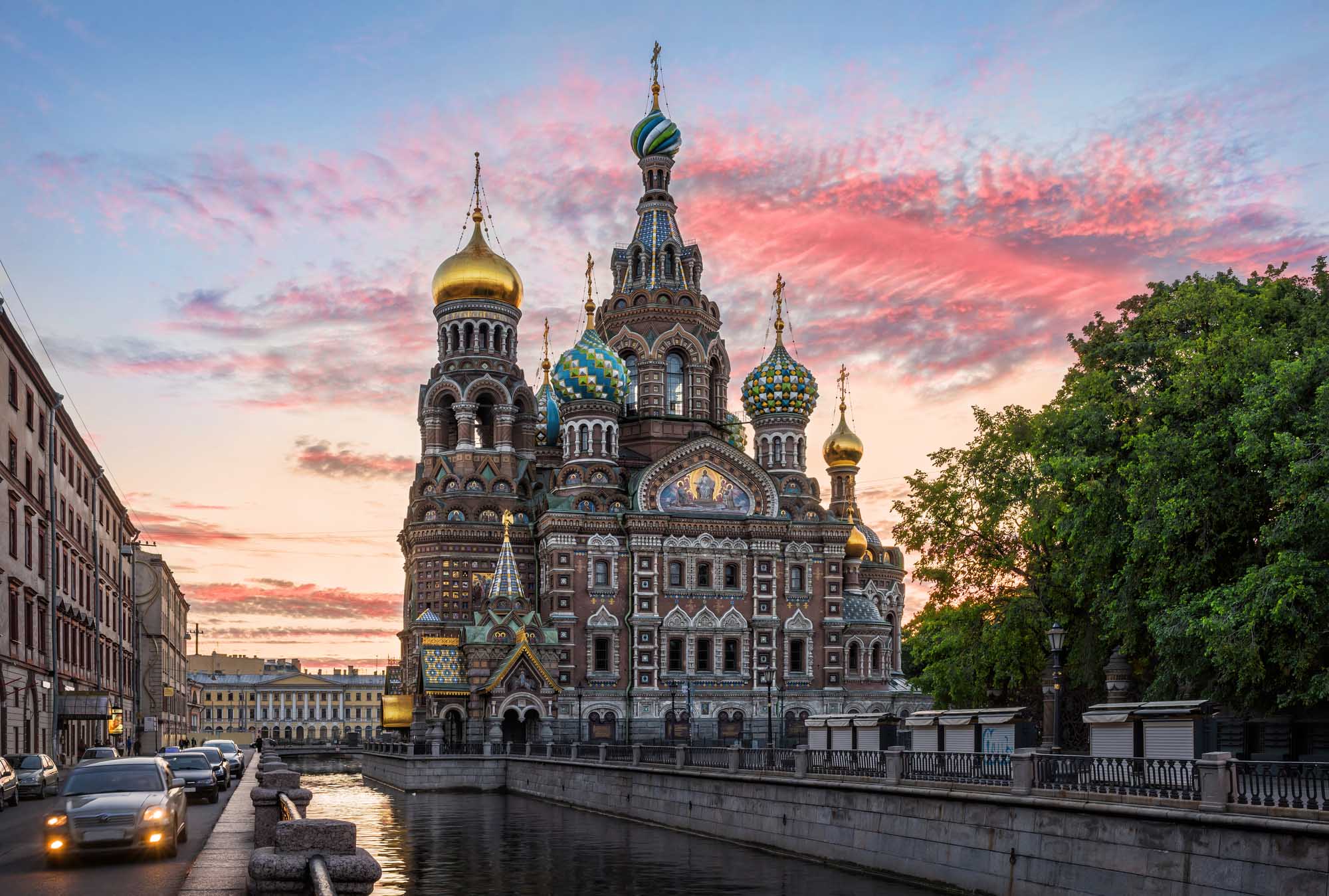
The Church of the Savior on Spilled Blood situated at the Griboedov Canal was funded by the Romanov imperial family. The church was built on the site where Emperor Alexander II was assassinated in 1881. It took over 20 years for the church to be finally completed. The exterior of the church was designed in traditional medieval Russian style and resembles the St. Basil’s Cathedral in Moscow. The interior was designed by some famous Russian artists including Viktor Vasnetsov, Mikhail Nesterov, Mikhail Vrubel. The walls and ceilings inside the church are completely covered with very detailed mosaics. There are over 7500 square meters of mosaics there. The church was seriously damaged during the October Revolution. During World War II it was used as a morgue and after the war it served as a warehouse for vegetables. In 1970 the church became a museum and restoration works started. It took 27 years to complete the restoration. It was reopened in August 1997. Nowadays the Church of the Savior on Spilled Blood is a museum of mosaics.
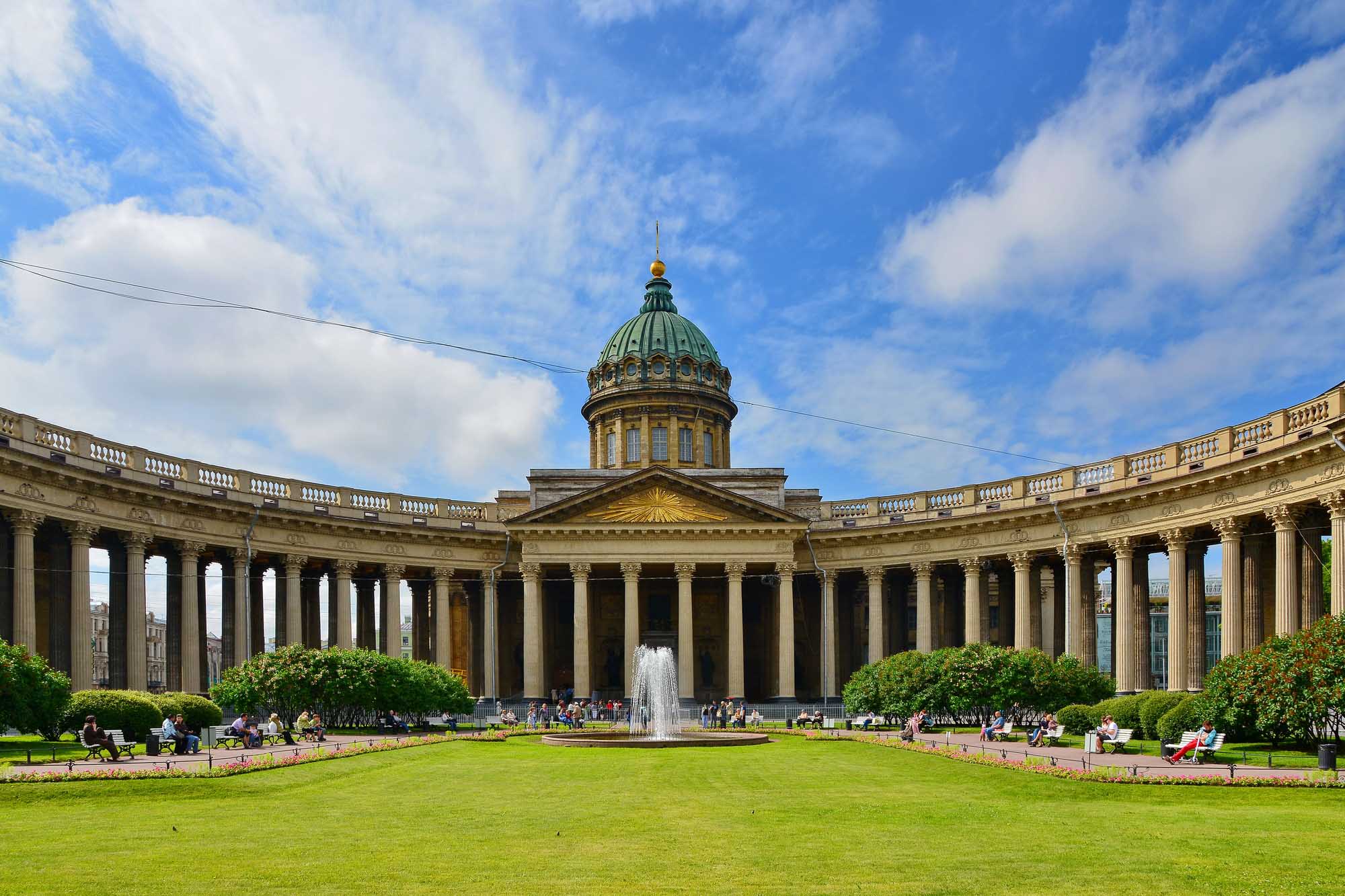
The Kazan Cathedral is the mother cathedral of the metropolis of St. Petersburg. The cathedral is dedicated to the icon of Our Lady of Kazan, which is considered to be one of the most venerated icons in Russia. The construction of the cathedral started in 1801 and finished in 1811. The architect of the cathedral, Andrey Voronikhin, took as a model for the cathedral St. Peter’s Basilica in Rome. The exterior of the cathedral has numerous columns. The interior features numerous sculptures and icons created by the best Russian artists of the day. One year after opening the Patriotic War with Napoleon started. The commander-in-chief General Mikhail Kutuzov asked Our Lady of Kazan for help. So after the war the cathedral was regarded as a memorial to their victory over Napoleon. In 1815 keys to seventeen cities and eight fortresses were brought by Russian army from Europe and placed in the cathedral. Some decades later two bronze statues of Kutuzov and of Barclay de Tolly were placed in front of the cathedral. After the October Revolution the cathedral was closed. In November 1932 it reopened as the «Museum of the History of Religion and Atheism». Since 1992 it’s an acting church.
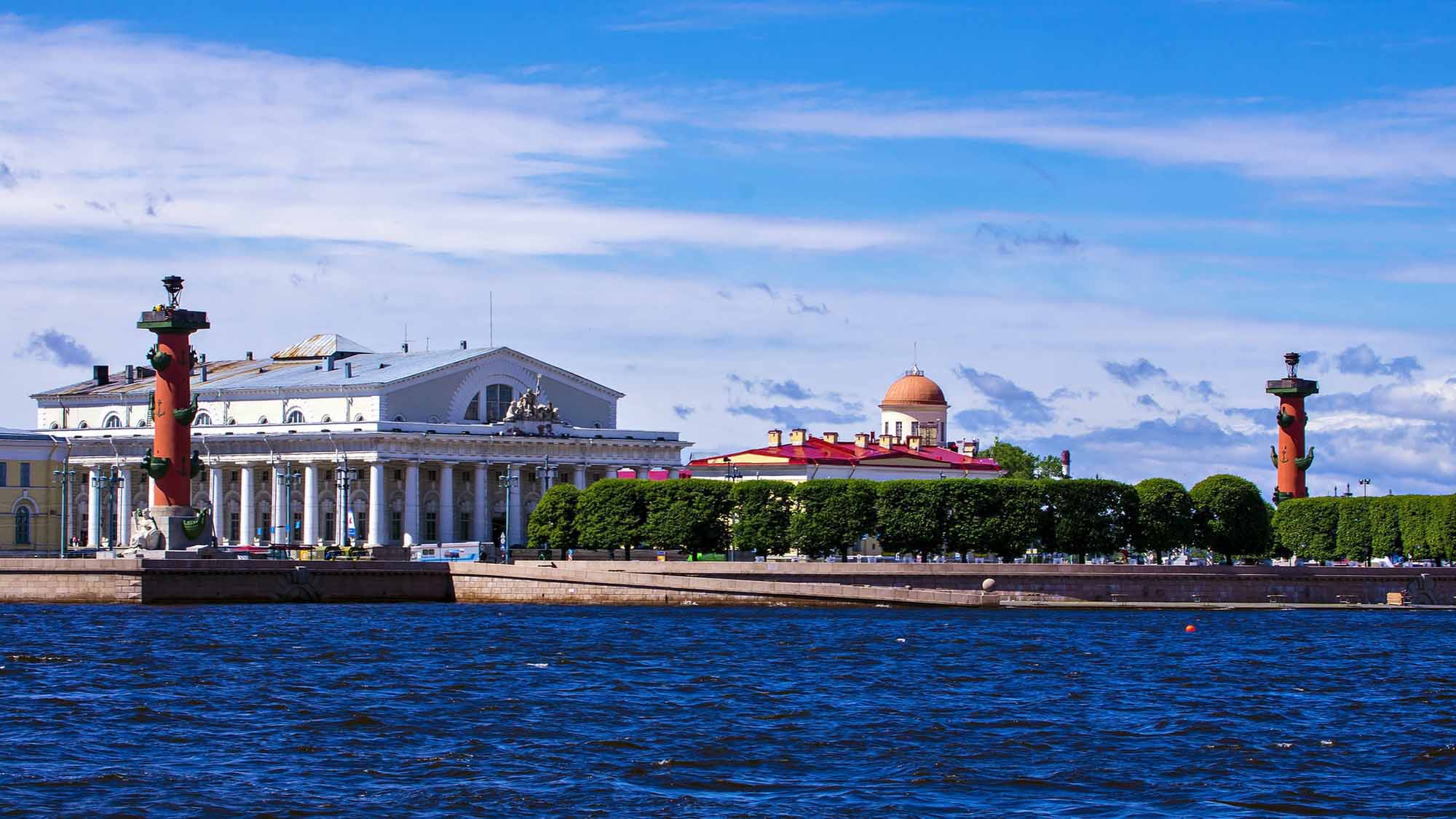
The Spit represents a small cape in the southeastern part of Vasilievsky Island, washed by the Big and Little Neva. Initially Peter the Great planned to do the Spit of Vasilievsky Island a business and commercial center. For this purpose architect Domenico Trezzini developed a project according to which the area on the spit would be the main city square and where the Twelve Collegia (12 ministries) building would be located. In the 1720s the sea port moved to the spit and soon after there appeared Customs and the Stock Exchange building (firstly wooden and then rebuilt in stone) on the spit. Since 1940 the Central Naval Museum is located inside the Stock Exchange building. On the left and right sides of the Stock Exchange building there are Rostral Columns of 32 meters each. The ensemble of spit also includes the main building of the Academy of Sciences, the Kunstkammer, the Novobirzhevoy Gostiny Dvor, buildings of southern and northern warehouses. The Spit of Vasilievsky Island is included into the UNESCO World Heritage List.
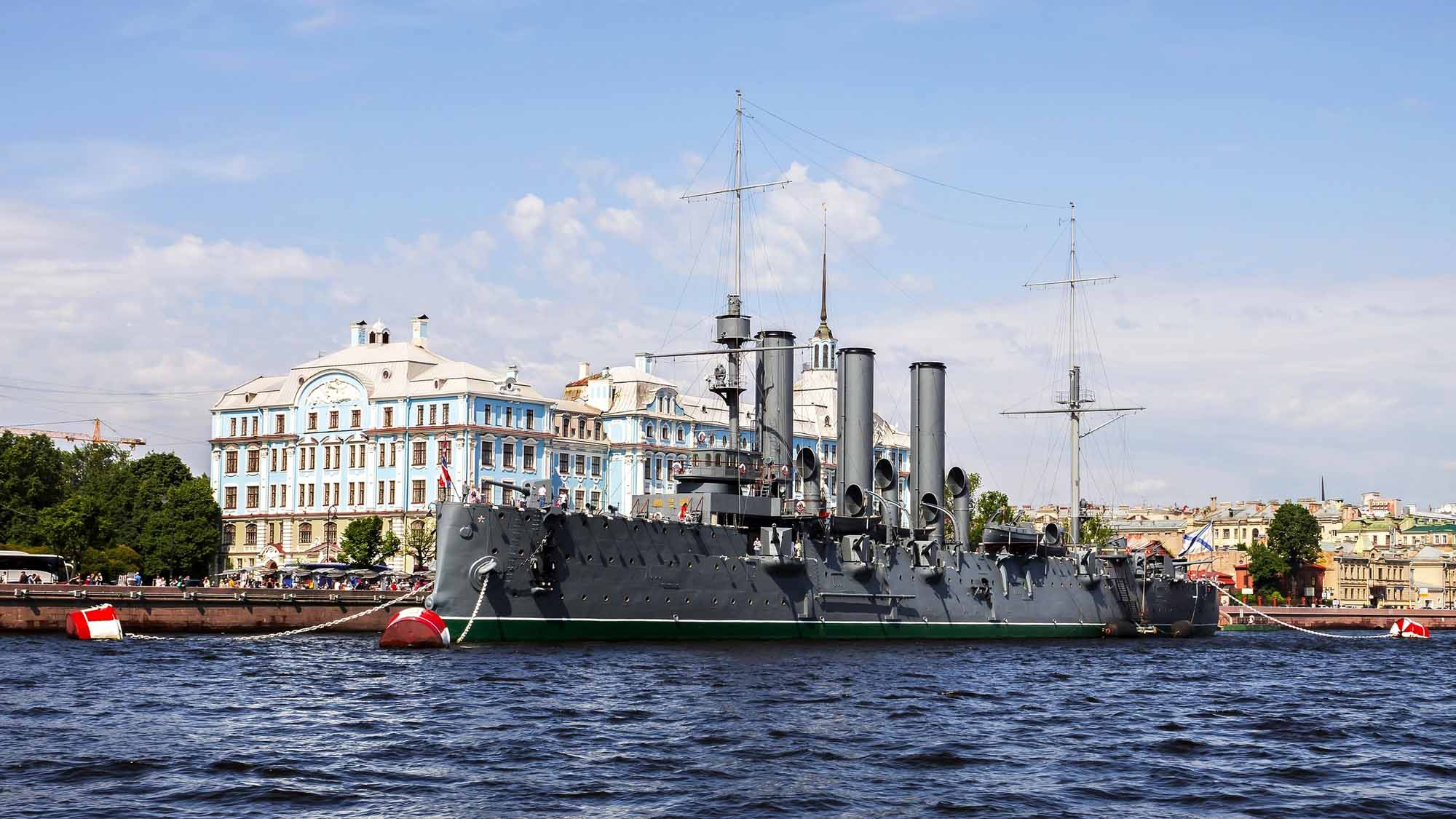
Cruiser Aurora is a retired Russian naval ship with an armored deck. Built in the beginning of 1900s, it served during the Russo-Japanese War in 1904–1905 and survived the Battle of Tsushima, where the Russians suffered massive losses. In 1906 Aurora returned to the Baltic and became a cadet training ship. At the end of 1916, Aurora was moved to St Petersburg for a major repair. Beginning 1917 there was a revolt on the ship and a part of her crew joined the February Revolution and later supported the October Revolution. On 7 November 1917 (New Style) a shot from her forecastle gun signaled the start of the assault on the Winter Palace which was the beginning of the October Revolution. In 1948 Aurora was permanently anchored on the Neva as a monument to the October Revolution. In 1957 Aurora became a museum-ship. Visitors can visit six different rooms onboard the ship, where they can learn about the everyday life onboard and see photographs, paintings and ship models.

The Mariinsky Theater is a historic theatre of opera and ballet in Saint Petersburg. The historical building of the theatre is a masterpiece of Neoclassical architecture with Neo-Byzantine design elements. The theatre is named after its imperial patroness, Empress Maria Alexandrovna, wife of Tsar Alexander II. The theatre opened in 1860 and became the preeminent music theatre of Russia. Many of the stage masterpieces of Tchaikovsky, Mussorgsky, and Rimsky-Korsakov received their premieres here. In Soviet times the theatre was known as the Kirov Theatre. Today, the Mariinsky Theatre is home to the Mariinsky Ballet, Mariinsky Opera and Mariinsky Orchestra. Along with the Bolshoy Theatre, the Mariinsky Theater is one of the most prestigious cultural institutions in Russia.
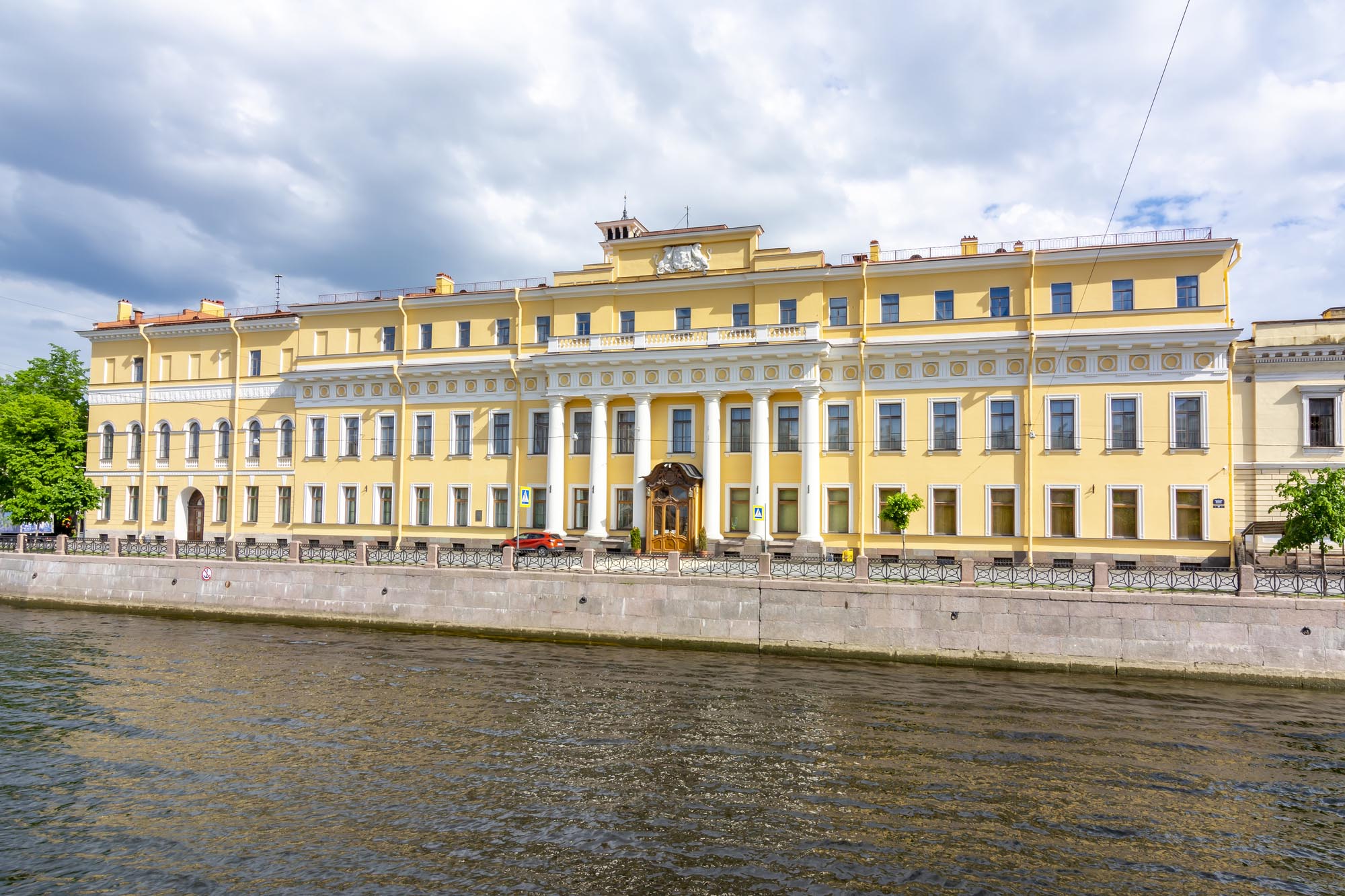
The Yusupov Palace on the Moika River was once the primary residence of the princely family Yusupov. The Yusupovs were immensely wealthy and well known for their art collections. The palace was built around 1776. Eminent Russian and foreign architects worked on the design of palace building. The palace featured luxurious interiors with more than 40,000 works of art, jewelry and sculptures. The palace went down in Russian history as the place where Grigory Rasputin (a mystical spiritual mentor and friend of the family of Emperor Nicholas II) was assassinated. After the October Revolution the palace was nationalized and its works of art were largely relocated to the Hermitage. In 1925 the palace was handed over to the city’s Education Commissariat who decided to preserve the mansion as a public museum. Today the Yusupov Palace is one of the few surviving aristocratic mansions of St. Petersburg featuring authentic State rooms, Art Gallery halls, a miniature Home Theater and the Yusupovs family luxurious Living quarters that radiate warmth and charm of their former owners even today.

The State Russian Museum is the world’s largest depository of Russian fine art. The museum collection contains over 400 000 exhibits covering all major periods and trends in the history of Russian art, all main types and genres, trends and schools of Russian art over more than a thousand years: from the X to the XXI century. The museum was established on April 13, 1895, upon enthronement of the emperor Nicholas II to commemorate his father, Alexander III. Its original collection was composed of artworks taken from the Hermitage Museum, Alexander Palace, and the Imperial Academy of Arts. After the October Revolution of 1917, many private collections were nationalized and relocated to the Russian Museum. The main building of the museum is the Mikhailovsky Palace, the former residence of Grand Duke Michael Pavlovich, located on Square of Arts in St Petersburg. The area of the present museum complex is more than 30 hectares. Museum collection is also accommodated in the Summer Palace of Peter I with the Summer Garden, the Marble Palace of Count Orlov, St Michael’s Castle of Emperor Paul, the cabin of Peter the Great, and the Stroganov Palace on the Nevsky Prospekt.
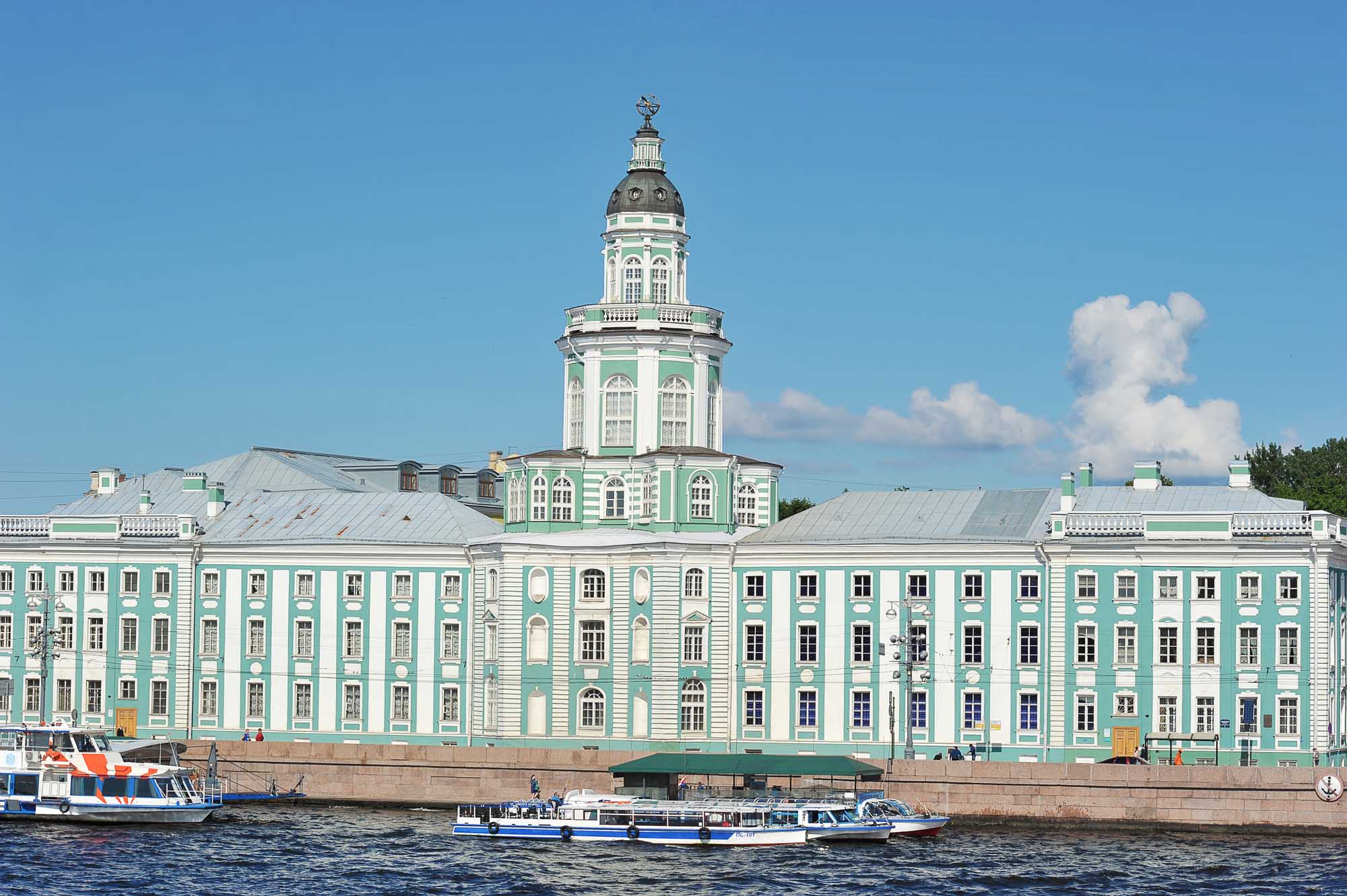
The Kunstkammer is officially known as the Peter the Great Museum of Anthropology and Ethnography. It is the first museum in Russia and one of the oldest in the world. The Kunstkammer was opened in 1714 under decree of Peter I. The core exhibits of the museum are curiosities brought back by Peter the Great from each of his journeys abroad: stuffed animals, model ships, tools, astronomical instruments. The collection includes also anatomical specimens and assorted freaks prepared by the Dutch anatomist Frederick Ruysch. The Kunstkammer building was special built for the museum and was once also housed by the Academy of Sciences, which is why you can also find a part of the museum dedicated to Mikhail Lomonosov, the founder of Moscow University. The present museum’s archives hold of over a million ethnographic, anthropological and archaeological artifacts of many nations all over the Earth. Many of the exhibits were gathered by famous Russian explorers of the 19th century.
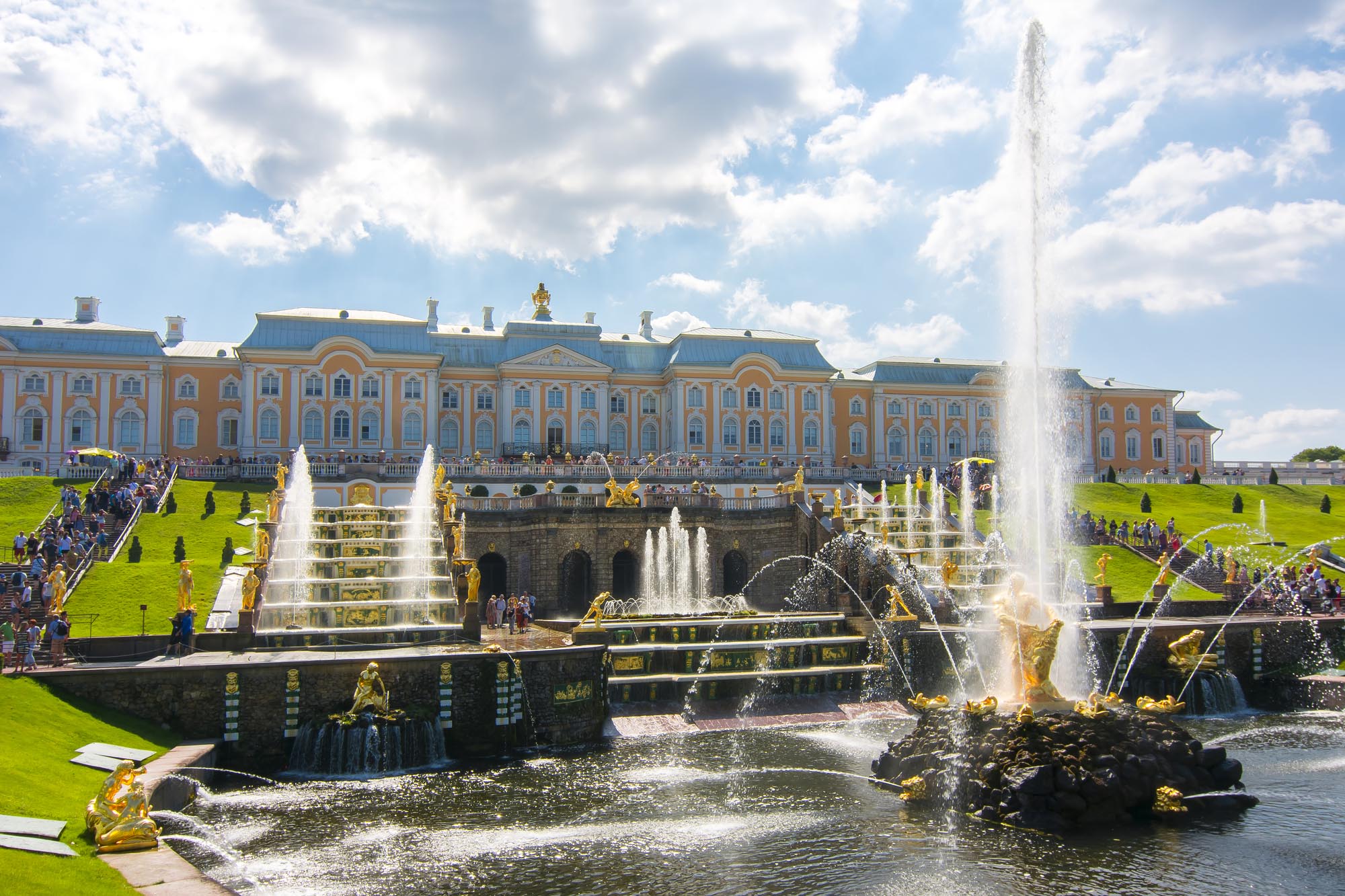
Being built throughout the early 18th century the Peterhof Palace represents a series of palaces and gardens located in town of Peterhof, about 30 kilometers from St. Petersburg. The Peterhof Palace was planned by Peter the Great to be a direct response to the Palace of Versailles after his visit to the French royal court. That’s why it is often called “Russian Versailles”. The Peterhof Palace is best known for its Grand Cascade, which consists of 64 fountains located on a series of terraces outside the main entrance of the Grand palace. The central part of the cascade takes the large Samson Fountain. It depicts the moment when Samson tears open the jaws of a lion, representing Russia’s victory over Sweden in the Great Northern War. The greatest technological achievement of Peterhof is that all of the fountains operate without the use of pumps. Worth visiting is the Grand Palace which stands in front of the Grand Cascade atop a 16-m-high bluff. The palace features 30 rooms decorated with truly imposing gold colors, lots of marble, items brought back from Asia, Baroque-style fireplaces and giant mirrors. The Peterhof Palace complex is recognized as a UNESCO World Heritage Site.
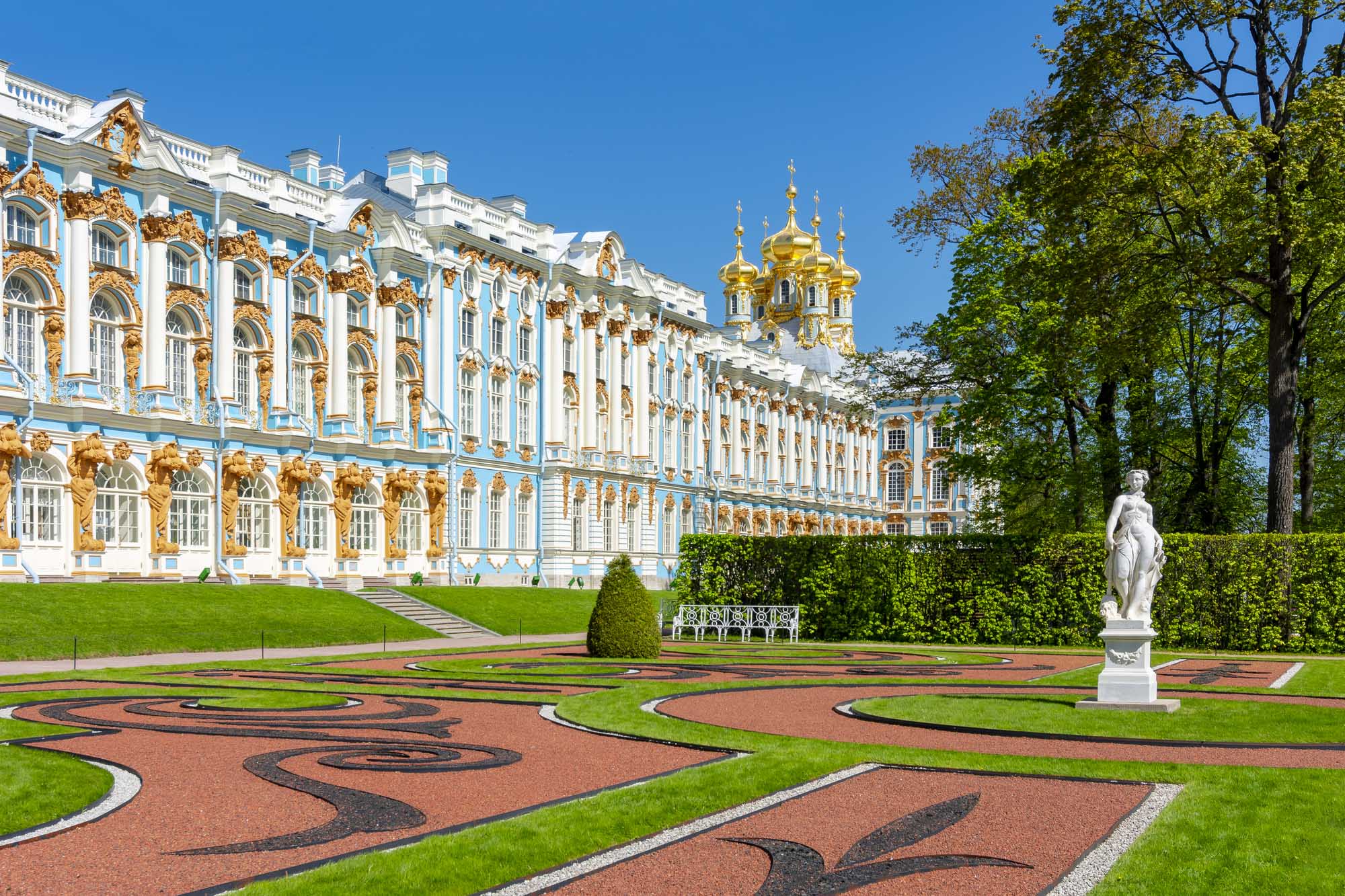
The Catherine Palace is a former summer residence of the Russian tsars located in the town of Tsarskoye Selo (Pushkin), 30 km south of St. Petersburg. Initially Peter the Great gave the Tsarskoye Selo estate to his wife Catherine I for whom in 1723 a stone palace was built and a garden with terraces and ponds was designed. During the reign of Peter the Great’s daughter, Empress Elizabeth, a new palace in Baroque style was built. In the 1770s Tsarskoye Selo became the summer residence of Catherine the Great and the palace was rebuilt in Neoclassical style. In luxury and richly decorated rooms important receptions, balls, formal dinners, and masquerades took place. World famous Amber Room was also placed in the palace. It represented a chamber decorated in amber panels backed with gold leaf and mirrors. The amber Room was given by the Prussian King Frederick William I to his ally Tsar Peter the Great and was considered to be by that time the «Eighth Wonder of the World». When the German forces retreated after the siege of Leningrad in World War II, they looted valuable things including the Amber Room and intentionally destroyed the palace. Soviet archivists had managed to document a fair amount of the interior before the war and in 1957 reconstruction started. Of the 58 halls destroyed 32 including the Amber Room have been recreated up to now.
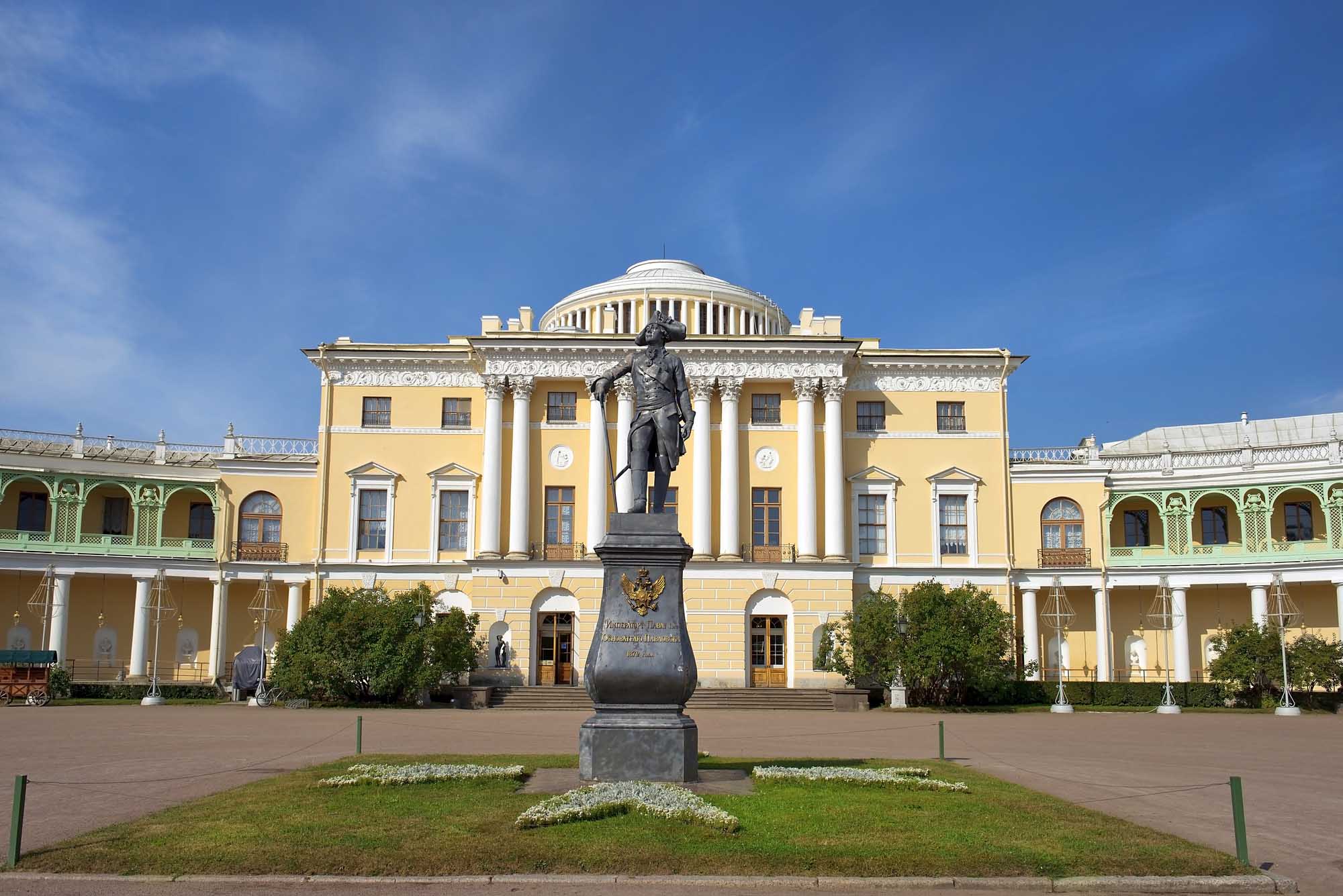
The Pavlovsk Palace is an imperial residence built by the order of Catherine the Great for her son Grand Duke Paul. After his death, it became the home of his widow, Maria Feodorovna. The palace is located in the town of Pavlovsk, about 30 kilometers from Saint Petersburg. It is one of the most romantic palace and park ensembles of the late 18th century. The centerpiece of the Pavlovsk ensemble is the Great Palace, a marvelous specimen of Russian Classicism of the late 18th and early 19th centuries. The premium works of art are located in the richly decorated halls of the palace among which are original works of Western European painting and sculpture, a rare collection of antique, unique Sevres porcelain items, carpets of French Royal textile mills, bronze ware and furniture by famous French, English, German and Russian masters. Soon after the October Revolution (1917) Pavlovsk was converted into an art and history museum. During the World War II Pavlovsk suffered tremendous damage. Restoration and reconstruction work began immediately after the war. Nowadays thousands of visitors come to see Pavlovsk reborn and beautiful as ever.